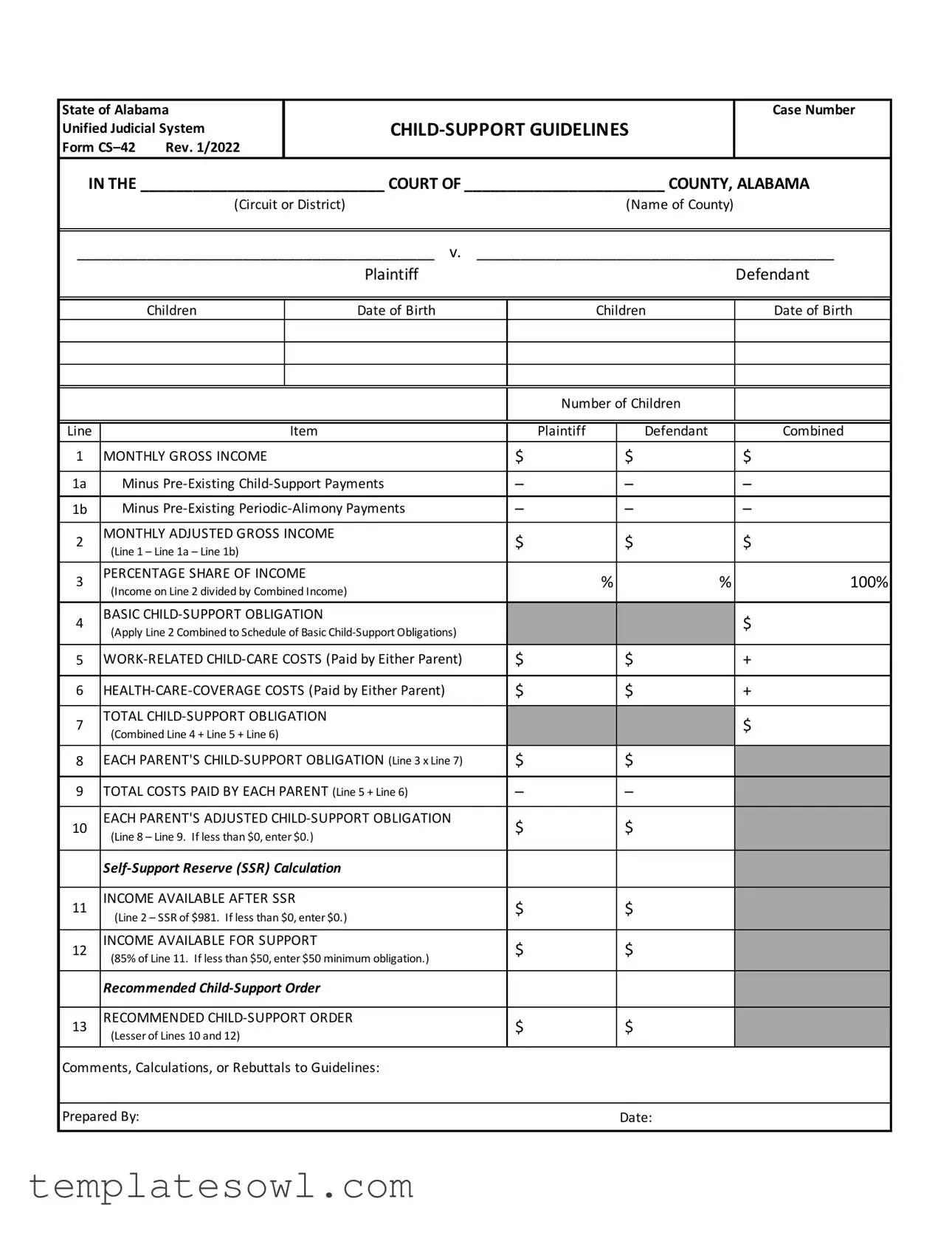What is the purpose of the Alabama Child Support Sheet form?
The Alabama Child Support Sheet form is used to calculate child support obligations in the state of Alabama. This form helps determine how much financial support each parent is responsible for contributing towards their children's care. It outlines the parents’ monthly gross income, adjusted income after certain deductions, and the total child support obligation based on these figures. The goal is to ensure that children receive adequate financial support from both parents.
Who needs to fill out the Child Support Sheet form?
The form needs to be completed by both parents during child support proceedings. It can be utilized in cases where child support is being established, modified, or enforced. Each parent must provide their financial information to ensure an accurate calculation of child support obligations. This fosters fairness and helps courts make informed decisions regarding support payments.
How do I calculate my child support obligation using this form?
To calculate the child support obligation, start by entering your monthly gross income on the form. Next, deduct any pre-existing child support and alimony payments you already make. This will give you your adjusted gross income. Then, find your percentage share of combined income, which reflects your contribution towards the total family income. Use this information to determine the basic child-support obligation and factor in any additional costs for childcare and health coverage to arrive at your total child-support obligation. Each parent's specific amount is then calculated from this total.
What if my calculated obligation is less than $0?
If your calculated child support obligation comes out to less than $0, you should enter $0. This means that, based on the provided income and expenses, the calculation does not require you to make any child support payments. However, it is important to note that other financial responsibilities related to the child's care may still exist, so it may be helpful to seek additional guidance or clarification on this matter.
